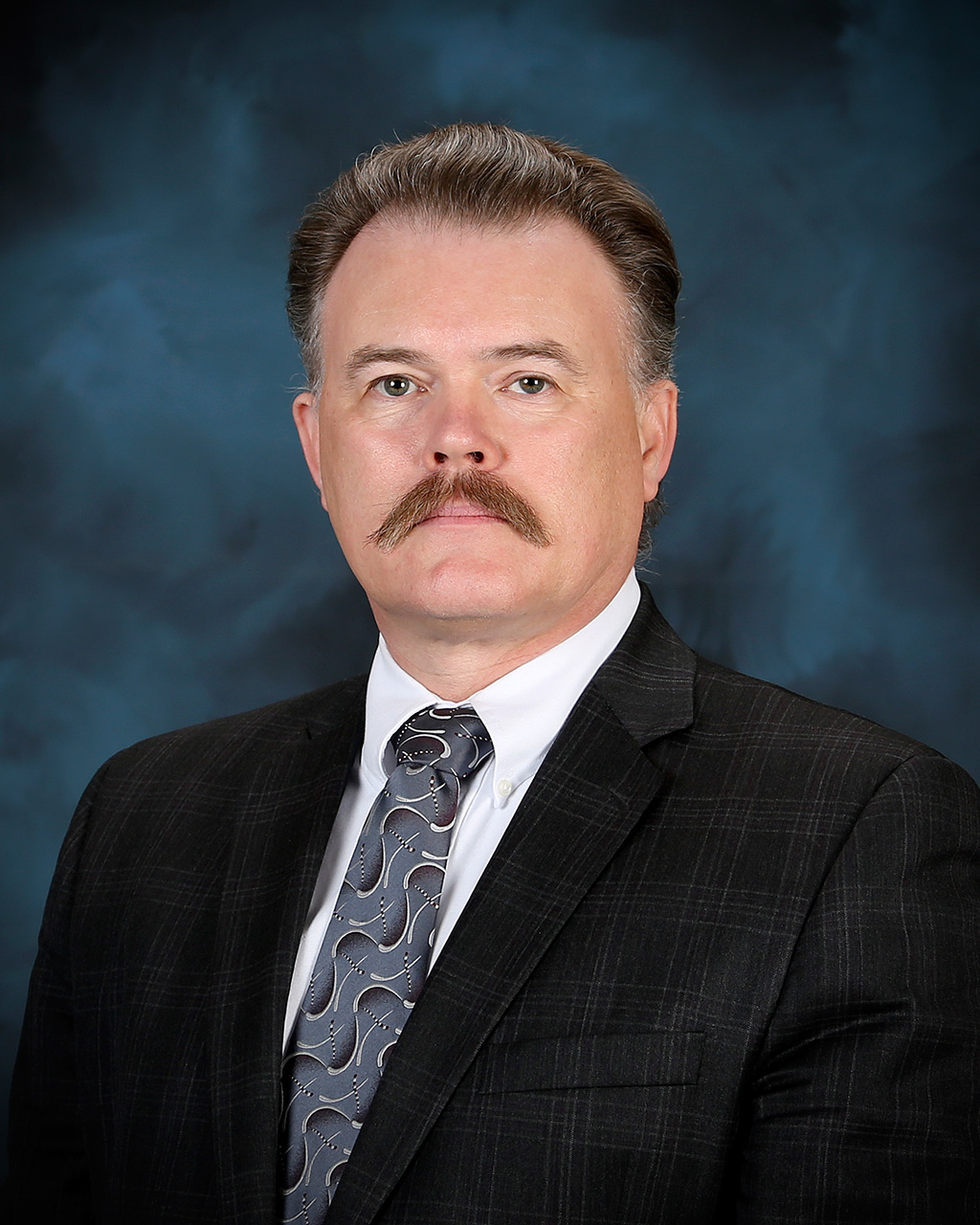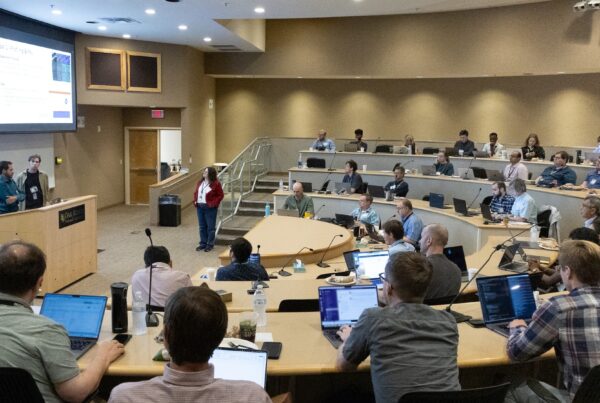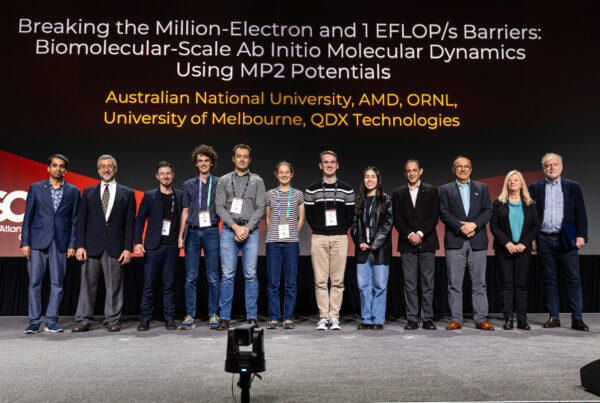
Tjerk Straatsma, graduate of the University of Groningen in the Netherlands, recently guest lectured at his alma mater as part of the 4-week European Master in Theoretical Chemistry and Computational Modelling summer school intensive course.
Course trains master’s and doctoral students for careers in computational chemistry
Tjerk Straatsma dove into the field of computational chemistry while a student at the University of Groningen in the Netherlands. Three decades later, through the European Master in Theoretical Chemistry and Computational Modelling (EM-TCCM) program, he had an opportunity to share some of his knowledge and expertise with next-generation computational chemists at his alma mater.
Straatsma is now the group leader for the scientific computing group at the Oak Ridge Leadership Computing Facility (OLCF), a US Department of Energy (DOE) Office of Science User Facility located at DOE’s Oak Ridge National Laboratory.
He traveled to the Netherlands in September to serve as an instructor for the EC-TCCM program, which offers an international intensive summer school for students. In its 10th year, the 4-week course (August 30–September 26), allows European graduate students to hone their computational chemistry abilities and hear from leading minds in the field, accruing a fifth of their necessary credits in the process.
As computers grow in size, next-generation researchers need to increase their awareness of how to use software more efficiently to minimize communication costs between computers’ nodes. “I focused on how the details of the architecture of a large-scale machine influence how one needs to write software to effectively use hardware and apply it to problems in chemistry,” Straatsma said.
Students began the intensive course by spending 2 weeks at Belgium’s University of Leuven covering topics ranging from mathematical methods in chemistry to molecular and chemical dynamics. In the latter 2 weeks, students traveled to the University of Groningen, where the course shifted to more advanced applications, such as Straatsma’s lectures about supercomputing in chemistry.
Students were busy—the course was 8 hours per day, 5 days per week—and they were tested weekly.
The course offered students the opportunity to become more familiar with a variety of chemistry domains and the many different paths they can take within computational chemistry. There is growing demand for researchers capable of not only using existing computational models for new insights, but also developing new software designed to perform larger, more complex chemistry simulations.
Straatsma noted that in addition to sharing supercomputing knowledge with students, his lectures also provided him with a good opportunity to recruit new talent in the form of staff or users on the OLCF’s Titan supercomputer. Through the Innovative and Novel Computational Impact on Theory and Experiment (INCITE) program, international users can submit proposals to use the OLCF’s flagship supercomputer for large-scale scientific challenges.
In addition to networking, Straatsma also took away best practices for running this type of training program. The OLCF is exploring the possibility of offering a similar intensive summer school course for graduate students using high-performance computing for scientific discovery. Straatsma’s positive experience provided great insight into how the course could be structured.
Oak Ridge National Laboratory is supported by the US Department of Energy’s Office of Science. The single largest supporter of basic research in the physical sciences in the United States, the Office of Science is working to address some of the most pressing challenges of our time. For more information, please visit science.energy.gov.





